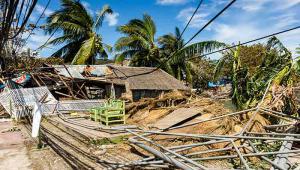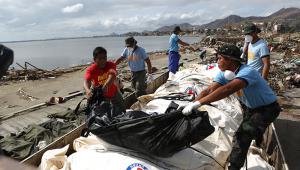The benefits of ensuring that the rebuilding efforts are stronger, faster and more inclusive, could save countries globally up to $173bn a year, the bank concluded.
This would especially benefit small island countries, such as the Caribbean, that are hit by disasters more frequently.
The World Bank report, Building Back Better, found that if all countries were to “build back stronger” in the next 20 years, losses countries suffer due to disasters would be reduced by 12%, a gain equivalent to $65bn annually.
It outlined that if countries were better at rebuilding assets and livelihoods the affected area would be less vulnerable to future shocks, while it should be done as fast as possible and be inclusive, so that nobody “is left behind in the recovery process”.
John Roome, senior director for climate change at the World Bank, said: “Building back better and stronger after a natural disaster is one of the most effective ways of ending the cycle of poverty and vulnerability that can trap people and communities.
“As climate change increases in intensity and impacts grow, we need to place an even greater priority on supporting countries with more resilient, swift and inclusive recovery and reconstruction processes.”
The report found 10 countries with a high-level risk would have reduce overall losses due to natural disasters by more than 60% with better reconstruction.
These countries include Antigua and Barbuda, Dominica, Guatemala, Trinidad and Tobago, Zimbabwe, Myanmar, Belize, Vanuatu, Peru and Angola.
Speeding up the recovery and reconstruction could reduce losses by 14%, the equivalent to a $75bn gain.
Ede Ijjasz-Vasquez, senior director for social, urban, rural and resilience at the World Bank, said: “A better recovery and reconstruction cannot replace risk reduction and prevention, which remains the main instruments to reduce asset losses and, therefore, well-being losses.
“However, preparedness and building back better can complement the other components of the disaster risk management tool kit.”
‘Well-being losses’ are the losses of materials that are necessary for ‘well-being’, such as food and housing.







